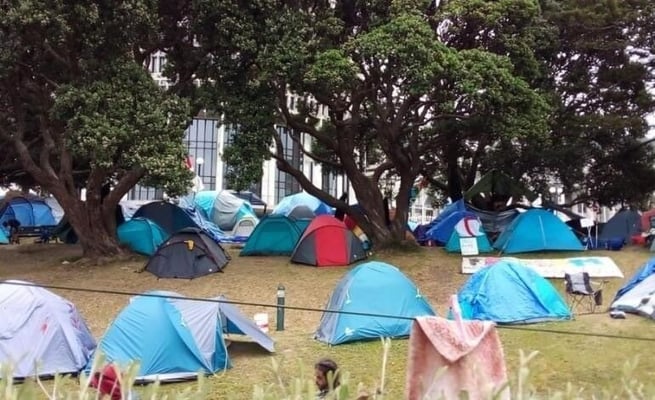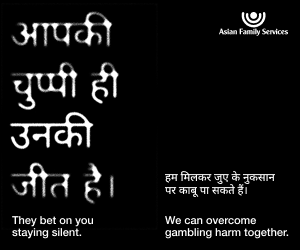Parliament siege anniversary a cautionary tale for the future

The siege of Parliament came to an end on March 2 a year ago. Three weeks of occupation climaxed with police swooping down on the protesters’ campsite ripping off tents and evacuating trespassers.
The Indian Weekender reported first-hand from the frontline where a pitched battle was in progress with protesters pushing against the barricades that separated them from the advancing column of police at the intersection of Bunny and Featherston streets in Wellington. Police pepper sprayed the protesters who resisted their advance. Smoke billowed in the air as rioters lit fires.
By evening, the Parliament grounds had been cleared.
The anti-mandate protest had been brought under control and the authority of the State re-established.
But the ethnic fault lines that underpinned the protest movement remained. It was clear that a section of the community had felt marginalised and beleaguered by the government’s strict vaccine mandates.
While it lasted, the protest had left the local retail community in the areas surrounding Parliament feeling unsafe, with shops and eateries downing their shutters earlier than usual.
There was nervous anticipation of a possible backlash from protesters looking to relaunch their protest movement.
The original protesters were a mixed lot. Diehard anti-vaxxers mingled with vaccine pass holders. Both groups bonded together to oppose what they saw as the government’s hard-line approach to managing the Covid pandemic.
But as Covid 19 cases spiked within the community, authorities saw the anti-mandate protest as a super spreader event.
The government was mindful of not indulging in triumphalism or chest thumping in the aftermath of the crackdown which resulted in clearing the Parliament grounds. Former Prime Minister Jacinda Ardern’s speech following the successful operation hinted at self-examination by the government into what led to the protests and if things could have been done differently.
The protesters re-surfaced a month-and-a-half later with a different strategy. Rather than amassing at a single point, they gathered at different locations throughout Central Wellington as part of a two-week campaign to focus their opposition to the Covid 19 legislation brought by the government. They saw the NZ Covid-19 Public Health Response Act 2020 as a coercive piece of legislation which empowered inspectors, for instance, to enter a premise without a warrant.
While the vaccine mandates wind-down by the government did take the steam off any resurgent protest, the Parliament grounds protest later morphed into an anti-vaccine stir instead.
There was an ideological shift away from mandates to raising questions about the politics behind the government’s Covid 19 policy, the science behind vaccinations and against the mandate of the World Health Organisation ( WHO) as the global authority on public health.
But the protest had lost the traction witnessed in March during the Parliament occupation.
By August, cracks started to appear within the ranks of the anti-government protesters as Bishop Brian Tamaki of the Destiny Church led a protest march to Parliament. In contrast to the mayhem that attended the 23-day siege of the Parliament precincts witnessed six months earlier, the Tamaki-led protest was orderly and peaceful.
But the authorities were taking no chances. Parliament was fenced off by bollards and road blocks in anticipation of trouble. Police maintained a heightened presence in the surrounding area.
Tamaki’s followers were booed by counter protesters opposed to him. It was clear this protest was radically different from the earlier Parliament occupation. The original anti-vaccine mandate protest movement had now been hijacked by religious zealots and transformed into a platform to serve their new-found political agenda, albeit peacefully.
The original Parliament occupation started as a protest against the government’s Covid 19 mandates and was similar to protests taken out in Canberra and Ottawa around that time. To that extent, its inspiration was sourced outside New Zealand.
The movement quickly gathered pace on the ground leading to an unravelling that resulted in a head-on collision between the protesters and the forces of State.
The Covid 19 response that drove the protest has since receded, but the radicalisation of a section of the NZ polity is a legacy that poses a potentially destabilising threat for the future.

The siege of Parliament came to an end on March 2 a year ago. Three weeks of occupation climaxed with police swooping down on the protesters’ campsite ripping off tents and evacuating trespassers.
The Indian Weekender reported first-hand from the frontline where a pitched battle was in progress...
The siege of Parliament came to an end on March 2 a year ago. Three weeks of occupation climaxed with police swooping down on the protesters’ campsite ripping off tents and evacuating trespassers.
The Indian Weekender reported first-hand from the frontline where a pitched battle was in progress with protesters pushing against the barricades that separated them from the advancing column of police at the intersection of Bunny and Featherston streets in Wellington. Police pepper sprayed the protesters who resisted their advance. Smoke billowed in the air as rioters lit fires.
By evening, the Parliament grounds had been cleared.
The anti-mandate protest had been brought under control and the authority of the State re-established.
But the ethnic fault lines that underpinned the protest movement remained. It was clear that a section of the community had felt marginalised and beleaguered by the government’s strict vaccine mandates.
While it lasted, the protest had left the local retail community in the areas surrounding Parliament feeling unsafe, with shops and eateries downing their shutters earlier than usual.
There was nervous anticipation of a possible backlash from protesters looking to relaunch their protest movement.
The original protesters were a mixed lot. Diehard anti-vaxxers mingled with vaccine pass holders. Both groups bonded together to oppose what they saw as the government’s hard-line approach to managing the Covid pandemic.
But as Covid 19 cases spiked within the community, authorities saw the anti-mandate protest as a super spreader event.
The government was mindful of not indulging in triumphalism or chest thumping in the aftermath of the crackdown which resulted in clearing the Parliament grounds. Former Prime Minister Jacinda Ardern’s speech following the successful operation hinted at self-examination by the government into what led to the protests and if things could have been done differently.
The protesters re-surfaced a month-and-a-half later with a different strategy. Rather than amassing at a single point, they gathered at different locations throughout Central Wellington as part of a two-week campaign to focus their opposition to the Covid 19 legislation brought by the government. They saw the NZ Covid-19 Public Health Response Act 2020 as a coercive piece of legislation which empowered inspectors, for instance, to enter a premise without a warrant.
While the vaccine mandates wind-down by the government did take the steam off any resurgent protest, the Parliament grounds protest later morphed into an anti-vaccine stir instead.
There was an ideological shift away from mandates to raising questions about the politics behind the government’s Covid 19 policy, the science behind vaccinations and against the mandate of the World Health Organisation ( WHO) as the global authority on public health.
But the protest had lost the traction witnessed in March during the Parliament occupation.
By August, cracks started to appear within the ranks of the anti-government protesters as Bishop Brian Tamaki of the Destiny Church led a protest march to Parliament. In contrast to the mayhem that attended the 23-day siege of the Parliament precincts witnessed six months earlier, the Tamaki-led protest was orderly and peaceful.
But the authorities were taking no chances. Parliament was fenced off by bollards and road blocks in anticipation of trouble. Police maintained a heightened presence in the surrounding area.
Tamaki’s followers were booed by counter protesters opposed to him. It was clear this protest was radically different from the earlier Parliament occupation. The original anti-vaccine mandate protest movement had now been hijacked by religious zealots and transformed into a platform to serve their new-found political agenda, albeit peacefully.
The original Parliament occupation started as a protest against the government’s Covid 19 mandates and was similar to protests taken out in Canberra and Ottawa around that time. To that extent, its inspiration was sourced outside New Zealand.
The movement quickly gathered pace on the ground leading to an unravelling that resulted in a head-on collision between the protesters and the forces of State.
The Covid 19 response that drove the protest has since receded, but the radicalisation of a section of the NZ polity is a legacy that poses a potentially destabilising threat for the future.










Leave a Comment